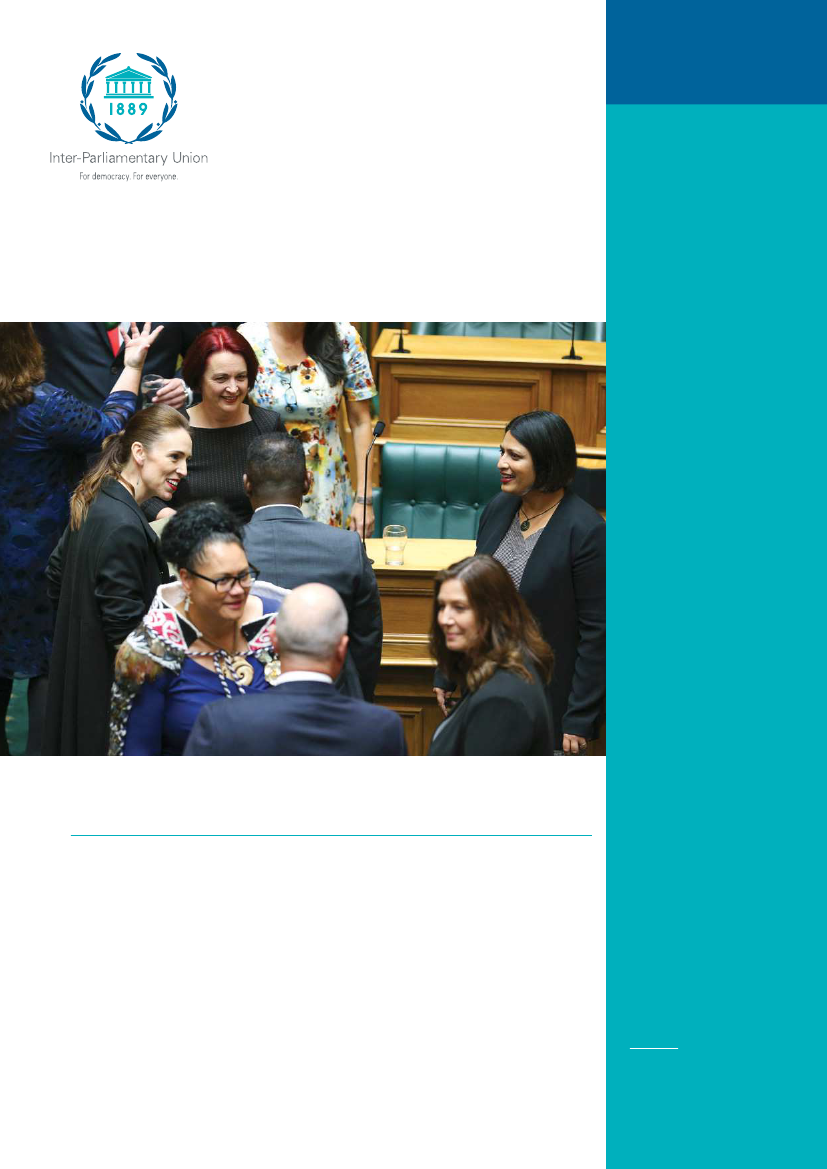
HIGHLIGHTS
Globally
• 2020 was marked by
continued gradual progress
for women in parliament
(+0.6 points) despite the
unprecedented COVID-19
pandemic and its impact.
The global average for the
proportion of women in
parliament reached an all-time
high of 25.5 per cent. Women
won 22.6 per cent of all
seats up for renewal in 2020
in 70
1
chambers across 57
countries. Women took 22.9
per cent of the unicameral or
lower chamber seats up for
renewal, and 21.6 per cent of
the upper chamber seats.
• COVID-19 created extensive
challenges for elections and
campaigning (especially online
violence and harassment
against women in politics) but
raised public awareness and
debate about many gendered
aspects of governance and
political leadership, such as
the ability to combine private
and public life, as well as the
need for gender-awareness in
recovery planning.
• Of the 57 countries that
held elections in 2020, 25
implemented legislated
quotas (either reserved seats
or candidate quotas). On
average, parliaments with
legislated quotas elected
11.8 per cent more women
to single and lower chambers
than parliaments with no
legal quotas (27.4 per cent
v. 15.6 per cent), and 7.4 per
cent more women to upper
chambers (25.6 percent v.
18.2 per cent).
• Quotas continued to act as a
shield against backsliding in
most cases but once quotas
are introduced, women’s
participation often plateaus
for multiple election cycles.
• Electoral systems play a role
in the adoption – but not the
effectiveness – of quotas.
Quotas were much less likely
to be used in countries with
majoritarian electoral systems
during parliamentary renewals
in 2020. But when they were
in place, quotas in majoritarian
electoral systems performed
1
Elections in the Central African
Republic and Venezuela are excluded
as results had not been validated or
confirmed at the time of publication.
Women in parliament in 2020
The year in review
2020 elections in New Zealand saw an unprecedented increase in the numbers of women and traditionally
under-represented groups both in parliament and in government, reflecting people’s demand for due
representation of all sectors of society in a time of pandemic. The female Prime Minister was widely
considered to have competently and efficiently managed her country’s response to COVID-19, which may
have boosted her bid for reelection. © Hagen Hopkins/Getty Images via AFP
Introduction
Elections in 2020 were profoundly marked by the COVID-19 pandemic, resulting in delays
and cancellations, logistical challenges for candidates and election administrators and often
low turnout. Women’s leadership was frequently in the spotlight during the pandemic. The
pandemic raised complex and deeply gendered challenges for citizens and created obstacles
for MPs to communicate and engage directly with their constituents. It changed the ways
parliaments operate, introducing flexibility and new technologies. A substantial number of
MPs across the globe were infected, many lost their lives.
Women’s participation continued to grow by 0.6 per cent in 2020, passing the 25 per cent
mark for combined upper and lower/single chambers worldwide for the first time (+0.7 points
for lower/single chambers and +0.2 points in upper chambers). This is a similar rate of growth
to the past decade. Several parliaments, such as Mali’s and Egypt’s, overcame remarkable